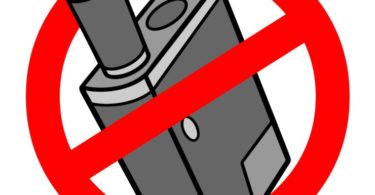
Unless you’ve been living under a rock, you know that the U.S. is facing a vaping epidemic where consumers are potentially inhaling/ingesting very toxic chemicals in the form of vaporized nicotine liquid and THC oil. The Centers for Disease Control and Prevent (CDC), Food and Drug Administration (FDA), and state and local governments are still trying to figure out what exactly is causing vapor-related illnesses and even death in some cases. According to the CDC, “as of October 1, 2019, 1,080 lung injury cases associated with using e-cigarette, or vaping, products have been reported to CDC from 48 states and 1 U.S. territory. Eighteen deaths have been confirmed in 15 states.”
This major public health issue is throwing into the spotlight the disappointing failure of the federal government to get on the right side of history when it comes to cannabis legalization. It’s no secret that true criminals don’t care about consumer safety and will cut their cannabis products with whatever suits them and not according to any kind of state or federal regulation. Without a doubt, if “marijuana” wasn’t a Schedule I controlled substance and therefore federally illegal, bad actors making these dangerous products wouldn’t be half as brazen as they currently are due to state-by-state legalization and its inability to keep up with the illegal market.
The other real-world problem is that many states don’t really regulate cannabis products all that strictly when it comes to certain ingredients and additives outside of what’s become the basic norm (i.e., no alcohol and cannabis, no nicotine and cannabis, no gummies, etc.). Don’t get me wrong: states, on the whole, tightly regulate cannabis, but it’s mostly to appease federal enforcement priorities around keeping criminals out of the regulated marketplace and to ensure sufficient control over production and distribution channels. In turn, some unhealthy/dangerous additives and ingredients may be making their way even into licensed cannabis products depending on the state. More often than not, states are not really thinking about consumer safety when they formulate their cannabis regulations–they’re more concerned with corporate and operational transparency in my opinion, but that should change as more consumer safety issues come to the forefront of the industry.
So, what can cannabis businesses expect, for better or worse, because of the current vaping problem.
1. Bans.
State and local governments have inherent police powers that allow them to institute laws and/or bans for the protection of public and health and safety. In this instance, the main target of government prohibition seems to be flavored tobacco e-cigarettes. However, some governments are going further and banning not just flavored tobacco e-cigs, but certain or all vapor products, including for cannabis. Massachusetts was the first state to institute a vaping ban on all vapor products, including for THC. It’s for 4 months (and it was challenged in court and upheld) but that’s not an insignificant amount of time for cannabis businesses that rely on vape manufacturing and sales to survive (see here for one MA-based nicotine vapor shop business that’s already shut its doors). As we covered yesterday, Oregon also just instituted a ban on all “flavored or non-marijuana terpene-containing products” for 6 months (specifically, the OLCC clarified that “[t]he ban will apply to any non-marijuana derived terpenes—including terpenes extracted from plants other than cannabis”–terpenes derived from cannabis are still okay to be sold in a vapor form). Other states, like California, issued health advisories to better educate consumers not to vape anything pending government investigations into what exactly is causing the reported lung illnesses, but no ban (yet). Since no one yet knows what’s making people sick from vaping (although there are a couple of chemicals that are on the suspect list), cannabis businesses need to have their heads on a swivel as state and local governments navigate the vaping issue through all-out bans or temporary moratoria.
2. More Regulations.
If you’re familiar with regulated industries, you know that the regulations are always changing to address industry issues as they arise. Sometimes, changes are nominal and they don’t really affect the bottom line. Other times, rule changes are hugely significant and whole product lines and/or businesses can be eliminated overnight. Without a doubt, as a result of the vaping illnesses, states are going to up the ante on restrictions around additives, ingredients, and testing around vapor products (we could even see certain vapor products eliminated altogether in a similar fashion that basically wiped cannabis gummy bears out of the legal market in every state). For example, Washington and California don’t explicitly bar Vitamin E acetate as an additive to cannabis products (this is the chemical that may be causing serious lung illness as it’s used as an additive to THC oil in vapor pens) and no state currently tests for vapor byproducts. Recall that a lot of state regulation surrounds the federal enforcement priorities of 2013, none of which have anything to do with product integrity or consumer protection. In the end, the vaping epidemic will essentially force states to mature on consumer protection and quality assurance issues.
3. Increased Internal Governance and Recalls.
These days, cannabis is pretty much like every other industry. Businesses are routinely setting up sophisticated corporate teams with a lot of experience and business acumen derived from other industries to govern their company policies and market choices. Cannabis businesses can expect to step it up in the quality assurance department when it comes to vapor products in that companies will very likely begin to review their current production policies around those products to ensure that they’re not putting dangerous and defective products on the market. I also expect a good amount of consumer outreach where businesses will want to be sure that customers understand what’s in their products and why they’re safe (as opposed to purchasing products from the illicit/unlicensed marketplace, including counterfeits, or from licensed product makers that are cutting corners on health and safety). I also anticipate that a certain number of self-imposed recalls will go down in a multitude of states (and that’s in addition to any state-based recalls that may be activated after the CDC determines what the culprit is in these vapor products). For more on how to establish and implement defensible and reliable recall protocol, see here and here.
4. Lawsuits.
Product liability lawsuits are not new to the licensed cannabis industry (see here, too). However, the vaping crisis is really the first national cannabis health and safety problem we’ve seen come to light since legalization in Colorado and Washington 7 years ago, and that’s bound to lead to litigation from the people affected by the dangerous and defective products. Most recently, Juul Labs, Inc. (a very large e-cig manufacturer) has become the target of a plaintiff’s class action in San Francisco. At the same time, at least one lawsuit has been filed against licensed cannabis operators in Washington State (in state court) regarding cannabis-related vaping injuries from this year. And this will not be even close to the last lawsuit we see in the cannabis industry related to vaping issues. In turn, cannabis businesses need to get very familiar with products liability, including strict liability (which subjects the entire distribution chain to attack) and negligence theories, and they need to make sure that their insurance is in order in the event they’re sued.
Intelligent cannabis businesses will get out in front of the vaping epidemic with tight corporate and production policies around vape production and quality, client education and safety, and recall protocols and plans that already plan for the worst. Until the states get more seriously into gear regarding consumer production (and, let’s face it, pick it up on enforcement against the illegal market and bad actors), a lot of consumer well-being will fall directly onto cannabis businesses and testing laboratories. With that great responsibility comes the large risk of having to deal with significant changes in regulation and litigation threats. For cannabis businesses, the time is now to prepare accordingly.








